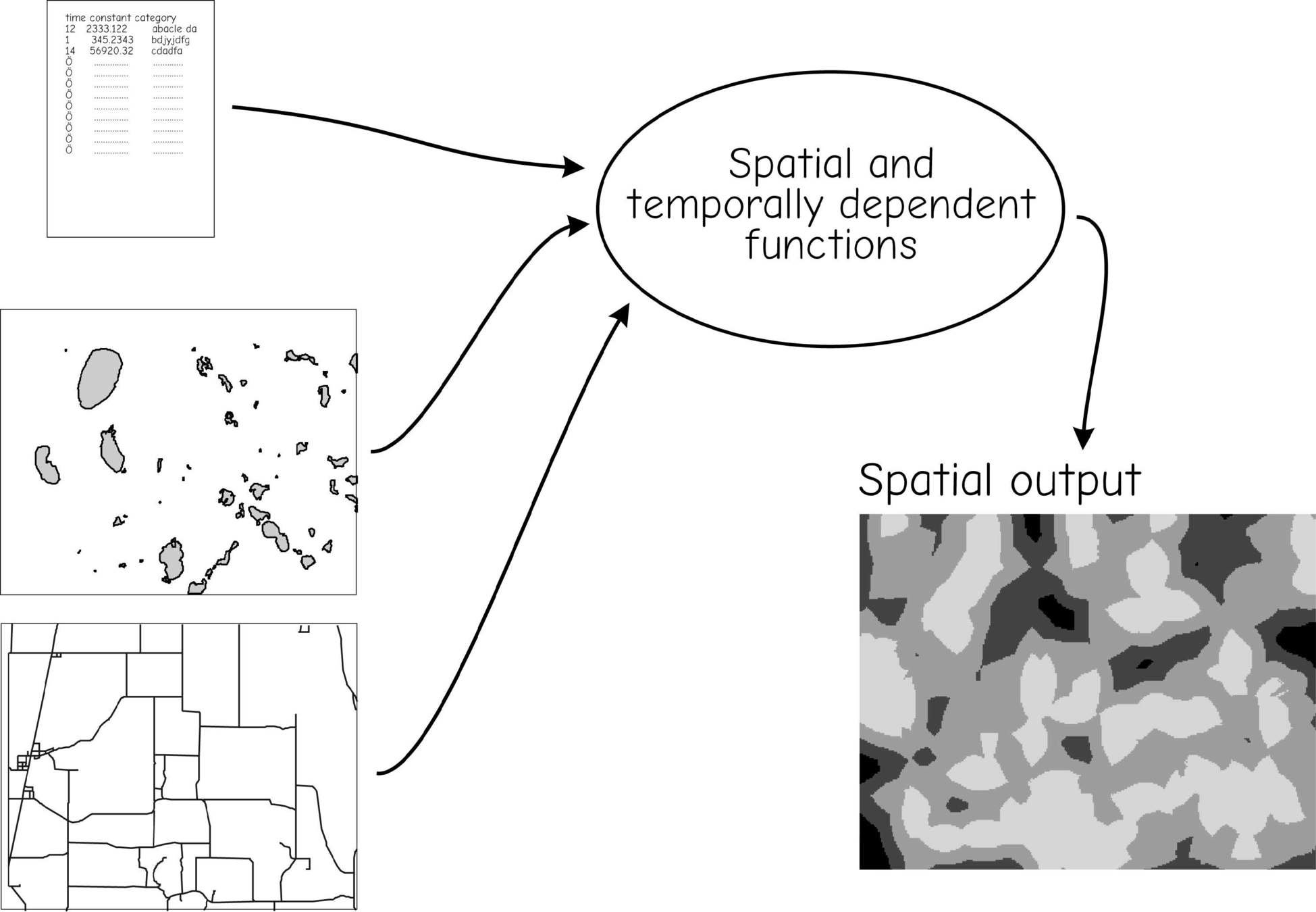Earthsys 144: Fundamentals of GIScience
Spatial Analytic Models
where is your data? gis.stanford.edu



Cartographic Data Model
cartographic data model

cartographic data model

map layers

titles

metadata

coordinates

locations across layers

labels

values

zones

punctual

lineal

areal

neighborhoods

"Raster is faster, but vector is correcter"
-Ron Briggs UTDallas
(Analytic) Spatial Models
A model is a description of reality.
In general, analytic spatial models can be classed as:
- Cartographic Models
- Simple Spatial Models
- Spatial-temporal models
Cartographic Models

Simple Spatial Models

Spatio-temporal Models

Cartographic Models

Cartographic Models

Ranking Criteria

A Cartographic Model
a) Slopes should not be too steep. Steep slopes may substantially increase costs or may preclude construction.
b) A southern aspect is preferred, to enhance solar warming.
c) Soils suitable for on-site septic systems are required. There is a range of soil types in the study area, with a range of suitability for septic system installation.
d) Sites should be far enough from a main road to offer some privacy, but not so far as to be isolated.

Rankings

Relative Importance Ranking

Simple Rank-based Weights

Analytic Hierarchical Process (AHP)
another method to google explore

Simple Spatial Models

Revised Universal Soil Loss Equation (RUSLE)
E=R*K*C*P*L*S
- E is average annual erosion,
- R is a rainfall factor,
- K reflects soil erodibility,
- C integrates crop effects,
- P accounts for management practices,
- L reflects slope length, and
- S represents steepness.

Spatio-temporal Models

Spatio-temporal Models are often cell-based models

Tobler's Hiking Function

Tobler's Hiking Function

Hydrologic Models

Using Hydrologic Models

Soil water, stream levels, and stream discharge depend on spatially and time dependent functions.
LANDIS (LANdscape DISturbance)


LANDIS (LANdscape DISturbance)

LANDIS (LANdscape DISturbance)

Flowchart for the home site suitability cartographic model.
Three basic data layers are entered.
A sequence of spatial operations is used to apply criteria and produce a map of suitable sites.
Model Criteria


Slope and aspect are derived from an elevation data layer for the study region. Both layers are then reclassified using a table assignment.
Slope values < 30 are reclassified as suitable (gray), all other slopes as unsuitable (black). Aspect values between 90 and 270 are reclassified as suitable (gray), all others as unsuitable (black).

The recoded slope and aspect data layers are combined in an overlay operation, and the result reclassified. Suitable terrain is shown in gray, unsuitable in black.

Soils data are reclassified into those suitable for septic systems and those not, and then combined with the suitable terrain data layer to identify sites acceptable based on both criteria.

Roads are buffered at 300 meters and 2 kilometers, and these buffers overlain.
The buffers are clipped to the study region, and suitable areas more than 300 meters and less than 2 kilometers from roads identified.

The overlay and reclassification of the combined data layers. Terrain, soils, and road buffer data are combined in an overlay. These data are reclassed based on the suitability criteria. A final dissolve is applied to reduce the number of polygons, resulting in a final layer of suitable sites.
Models & 'Scripting'

QGIS Modeler

Spatial Analytic Models
By Stace Maples
Spatial Analytic Models
- 202



